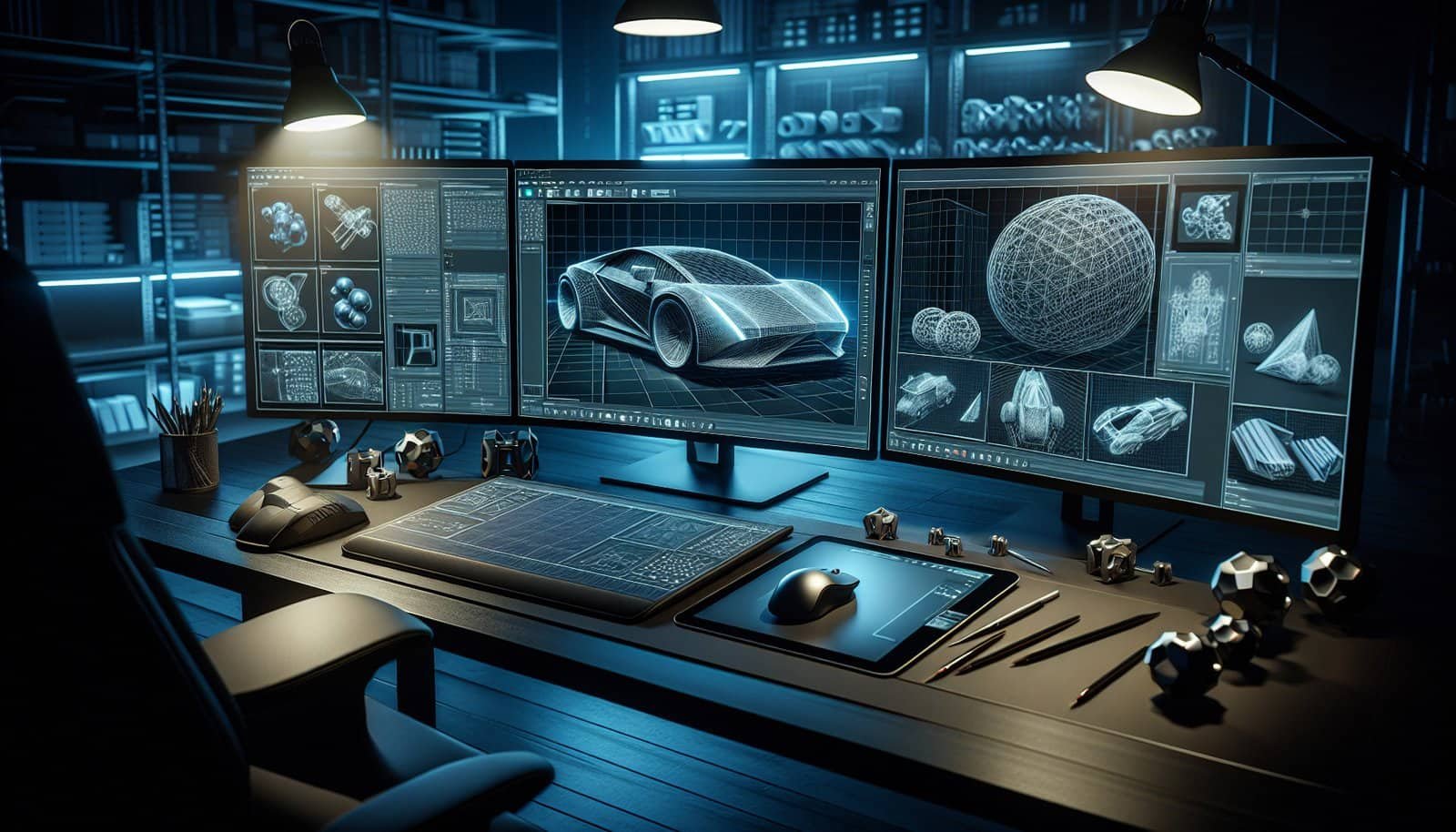Have you ever marveled at the exquisitely realistic images of products on websites or in advertisements and wondered how those images came to life? There’s a significant chance that they were crafted by a 3D product rendering specialist. In today’s digital and technologically advanced world, there’s a growing reliance on stunning visuals to capture customer attention. And a 3D product rendering specialist is often at the heart of this creative process.

Understanding the Role of a 3D Product Rendering Specialist
The role of a 3D product rendering specialist is both fascinating and complex. While it may seem like a niche profession at first glance, its implications in the digital and consumer-centric world are vast. Let’s uncover what this role entails.
Bringing Concepts to Life
A 3D product rendering specialist’s main job is to transform concepts, ideas, or even basic sketches into visually appealing digital images. This process involves creating three-dimensional models of products and designing realistic renderings that resonate with both businesses and consumers. Whether it’s a conceptual gadget or a piece of furniture, the specialist turns these ideas into concrete, delightful visual experiences.
Skill Set and Tools
To master the art of 3D rendering, one must become proficient in a variety of tools and techniques. Software like Autodesk 3ds Max, Blender, and KeyShot are just a few of the powerhouse tools frequently utilized. These programs help in manipulating textures, lighting, and shadows to produce striking images. Beyond technical prowess, a keen eye for detail and aesthetics is critical for success.
The Importance of 3D Product Rendering
Why has 3D product rendering become so indispensable in today’s market? This isn’t just about making pretty pictures; rather, it’s a strategic tool that has the power to transform businesses.
Enhanced Marketing and Advertising
Creating visually compelling imagery helps brands stand out in crowded marketplaces. By providing engaging visuals of their products, companies can more effectively communicate their value propositions and establish deeper connections with potential customers.
Cost Efficiency and Flexibility
Producing high-quality photographs of physical prototypes can be costly and time-consuming. Alternatively, 3D rendering is a more efficient solution with the flexibility to make adjustments easily. Need to change a color or test a new design? A few clicks can make that happen without the need for new prototypes.
Facilitating Customization
Today’s consumers are increasingly seeking products that feel personalized. Through 3D rendering, customization options can be displayed effortlessly. Potential buyers can visualize different variations of a product, such as colors, textures, or even custom engravings, helping them make informed decisions with greater satisfaction.
Applications Across Industries
The scope of 3D product rendering extends far beyond traditional boundaries, influencing a wide array of industries. Here’s a glance at some of the sectors where these specialists make a significant impact.
Consumer Goods
From electronics to home appliances, 3D rendering makes complex product details understandable, ensuring that consumers have a comprehensive view of a product before making a purchase. The sleek and detailed visualizations help bridge the gap between virtual browsing and physical buying.
Fashion and Apparel
With the fashion industry rapidly embracing digitalization, 3D rendering plays a principal role in demonstrating how garments fit and look on varied body types, without the need for physical clothing racks. Fashion houses can showcase collections virtually, offering avant-garde styles at a digital click.
Automotive Sector
For the automotive industry, offering immersive experiences through 3D renderings is key. Car manufacturers use this technology to offer virtual tours of their vehicles, allowing potential buyers to explore interior designs, color options, and additional features in glorious detail.
Challenges and Opportunities
While the field is filled with incredible opportunities, it’s not without its challenges. Understanding these hurdles is vital for anyone looking to immerse themselves in this enticing profession.
Keeping Pace with Technology
The digital landscape is ever-evolving, necessitating continuous learning and adaptation. As technology progresses, those in the field must stay updated with the latest software developments and rendering techniques to ensure they remain competitive and innovative.
Balancing Creativity and Client Needs
Striking the perfect balance between artistic expression and meeting client expectations can sometimes be a tightrope walk. Specialists must hone their communication skills to ensure that they convey their creative visions while staying aligned with client objectives and feedback.
Embracing the Global Market
One of the advantages in this field is its universal appeal and the ability to work with clients globally. While this broadens horizons and client bases, it also means navigating varied cultural expectations and preferences, which can pose its own set of challenges.

How to Pursue a Career as a 3D Product Rendering Specialist
For those with a penchant for creativity and an enthusiasm for the digital world, becoming a 3D product rendering specialist might be a dream career. Here’s a roadmap to help guide budding specialists in their journey.
Education and Training
While some enter the field through formal education, such as obtaining a degree in graphic design, animation, or a related discipline, others may be self-taught. The key is to amass comprehensive knowledge of rendering software and develop a strong aesthetic sense.
Building a Portfolio
A robust and diverse portfolio is instrumental in showcasing your skills to prospective clients or employers. Highlight projects that demonstrate your range and capability to transform varied concepts into compelling renderings.
Networking and Collaboration
Establishing connections within industry circles can open doors to collaborative opportunities, knowledge exchange, and progress within the profession. Engaging in online forums, attending industry workshops, and contributing to open-source projects can bolster these efforts.
Assessing the Impact of 3D Product Rendering
In contemplating the broader ramifications of 3D product rendering, it becomes clear just how impactful this field can be. This transformative technology acts as a bridge between imagination and reality, providing tools that cater to both business needs and consumer desires.
Enriching Consumer Experience
The hyper-realistic elements enabled by 3D rendering heighten consumer interaction with products before making any purchase commitment, offering not only a visually pleasing journey but a more informed buying decision as well.
Driving Innovation
As industries lean toward augmented and virtual reality, the incorporation of 3D rendering into these realms fosters boundary-pushing innovations. This continuous cycle of novelty and progression ensures that 3D rendering remains at the forefront of digital transformation.

Utilizing Online Quiz Makers for Lead Generation
Interestingly, online quiz makers have emerged as an intriguing method for employing lead generation tactics in the realm of 3D product rendering. By blending educational value with engagement, quizzes can capture the interests of potential clients or collaborators.
Crafting Engaging Quizzes
Consider designing quizzes that align with the interests of your audience, such as “Which 3D Modeling Tool Suits You Best?” or “How Much Do You Know About Your Favorite Products in 3D?” Such interactive content not only engages but also informs and educates, paving the way for meaningful connections.
Benefits of Using Quizzes
Quizzes offer a non-intrusive method to collect user information, vital for targeted marketing campaigns. By understanding user preferences and interests, you can tailor offerings, products, or collaborations effectively, amplifying your reach and resonance in the market.
Closing Thoughts
In the grand tapestry of the digital age, the role of a 3D product rendering specialist is a vivid thread, woven intricately through sectors as diverse as fashion, automotive, and consumer electronics. From elevating brands’ visual storytelling to transforming how consumers interact with products, the significance of this role continues to expand. By melding creativity with technology, specialists in this field not only capture attention but also push the boundaries of what’s possible, continually inspiring awe and sparking imagination. As you embark or continue on this stimulating journey, embrace the challenges as opportunities for growth and transformation in a world increasingly yearning for digital excellence and innovation.

